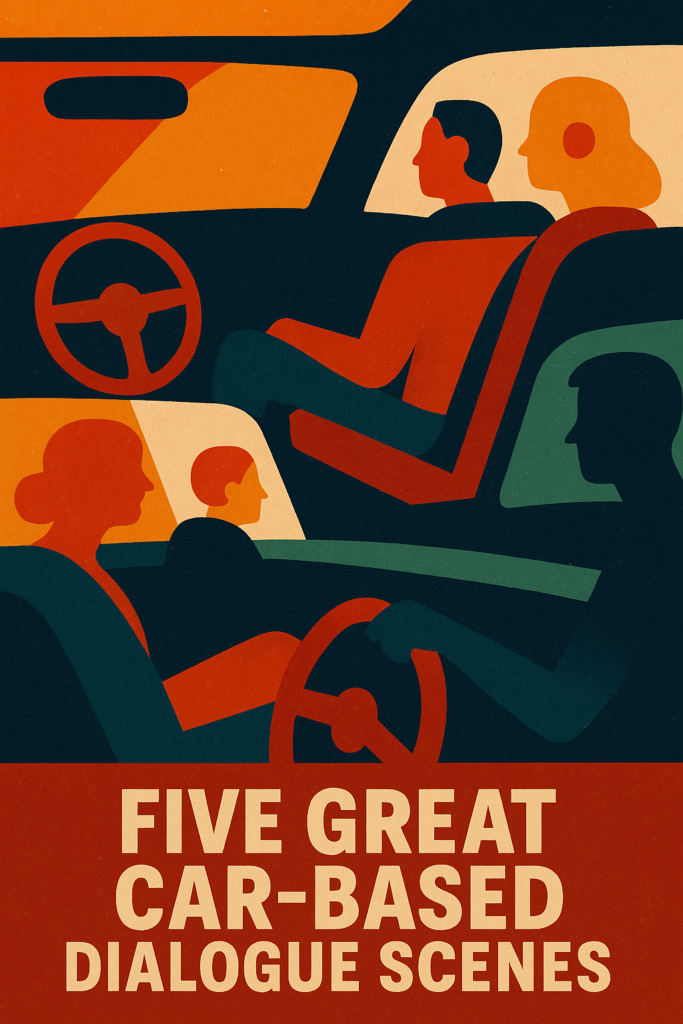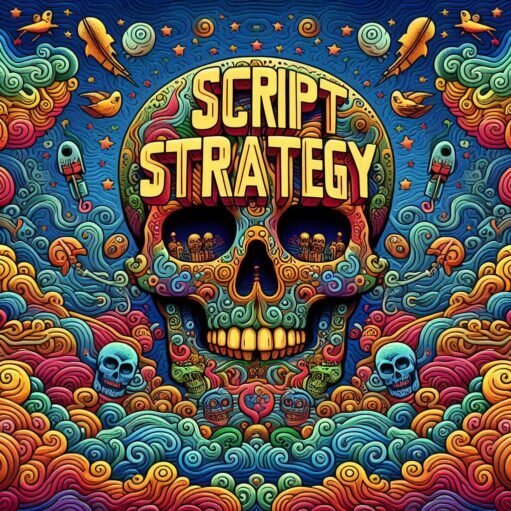Five Great Car-Based Dialogue Scenes—and What They Teach Screenwriters

Most car scenes in movies suck.
They’re static, filled with bad exposition, and often used as cheap transitions between more “important” locations. Screenwriters sometimes rely on movement or weird scenarios to make dialogue feel interesting—a strategy given the memorable name “The Pope in the Pool” by Blake Snyder, where attention is diverted from exposition with visual distraction.
(Naturally, Snyder is a big fan of this approach. No comment.)
But the problem is that if the action is something banal and repetitive and semi-stationary like driving, we don’t get the movement or the weird scenario!
A character explaining their backstory while driving through the city isn’t engaging—it’s lazy. Unless the car itself becomes part of the story, or the conversation is charged with subtext, tension, or transformation.
That’s why great car-based dialogue scenes are rare—and powerful. When done well, a car becomes a crucible: a confined space, a moving metaphor, a stage for conflict or connection. The best car scenes aren’t about transportation—they’re about revelation.
Here are five film scenes that use car-based dialogue in unexpected and memorable ways—and what each one teaches screenwriters about craft, character, and theme.
1. Pulp Fiction (1994) – “Royale with Cheese”
Characters: Vincent Vega and Jules Winnfield
Scene: Two hitmen drive through L.A. discussing McDonald’s menus in France.
Why It Works
This scene shouldn’t work: two guys with weird hair and cheap suits talking about cheeseburgers sounds like the sort of filler that would be cut out of almost anyone’s movie.
Nevertheless, Quentin Tarantino’s “Royale with Cheese” exchange has become one of the most iconic moments in cinema—and it all happens in a car.
The conversation is seemingly trivial, but it serves several functions:
- It humanizes the two hitmen, making them instantly relatable.
- It creates contrast with the violence that follows.
- It introduces Tarantino’s signature tone: banal meets brutal.
- It sets up a world where casual talk and existential dread exist in the same breath.
Screenwriting Lesson
Use car dialogue to explore character chemistry and rhythm, not plot mechanics. Jules and Vincent’s banter is character gold. It’s not “about” the job—what’s interesting is the existential perspective of these two men who literally murder people for a living yet still care about foot massages and European fast food:
“I seen ‘em do it. They fuckin’ drown ‘em in that shit.”
2. Lady Bird (2017) – “I Want to Live Through Something
Characters: Lady Bird and her mother Marion
Scene: A heated argument in the car ends with Lady Bird jumping out mid-drive.
Why It Works
Greta Gerwig flips the traditional car scene on its head. We expect a parent-child argument to stay verbal—but this one goes kinetic. Lady Bird opens the door and jumps out of the moving vehicle, ending the scene with a literal crash.
What starts as a routine college-planning talk turns into a battle of identities. Marion is practical, fearful, and loving–yet stubborn as a fucking rock. Lady Bird is impulsive, romantic, and desperate to break free.
Thematic Function
The car becomes a symbol of containment and control—exactly the things that Lady Bird rebels against. Her leap is a metaphor for her desire to control her own life, consequences be damned.
Screenwriting Lesson
Use car scenes to externalize emotional conflict. Don’t settle for subtext—if the theme is independence vs. control, let the vehicle become the stage for rebellion.
3. Where the Buffalo Roam (1980) – The Road Trip Hitchhiker
Characters: Hunter S. Thompson and Lazlo
Scene: Thompson picks up a hitchhiker while high, launching into a wild, chaotic rant.
Why It Works
This car scene is total madness. It’s not about driving. It’s not even about plot. It’s about ideology, identity, and paranoia.
The hitchhiker becomes a prop in a surreal monologue, caught between two anarchic forces (Thompson and Lazlo) who don’t care if he understands—or survives.
The dialogue is disjointed, drug-fueled, and dangerous—but it reveals the core ethos of Thompson’s world: nothing is sacred, and chaos is treated as truth.
Legacy and Influence
This scene is inspired from the early hitchhiker scene in the book Fear and Loathing in Las Vegas, but its rhythm quite obviously inspired:
- The Marvin scene in Pulp Fiction (note the gigantic fuck-off silver gun)
- The Tobey Maguire hitchhiker scene Fear and Loathing in Las Vegas
Screenwriting Lesson
Use car scenes for ideological clashes. When your characters are trapped in motion, there’s nowhere to hide. If someone is unraveling, trap them in a car and let them rant.
Bonus points for having an innocent bystander there to stew in the madness.
4. Ford v Ferrari (2019) – GT40 Test Drive
Characters: Carroll Shelby and Henry Ford II
Scene: Shelby takes the Ford CEO for a ride in the GT40—and makes him cry.
Why It Works
This scene is less dialogue and more character: it uses speed and silence. The car isn’t boring-ass transportation—it’s a theatrical device. Carroll Shelby wants to bring across the importance of performance–and he lets the GT40 do the talking.
The emotional payoff? Henry Ford II, a titan of industry, is reduced to a weeping mess, totally overwhelmed by what his racing team hath wrought.
Thematic Function
It’s a scene about vision vs. bureaucracy, heart vs. money, risk vs. reputation. And it all happens without heavy-handed dialogue.
Screenwriting Lesson
Be physical rather than verbal. Don’t write a speech when you can choreograph an experience. In this scene, velocity unmasks vulnerability.
5. Fight Club (1999) – The Limousine Scene
Characters: The Narrator (Jack) and Tyler Durden
Scene: Tyler lets go of the steering wheel, daring the car to crash.
Why It Works
Tyler challenges the Narrator and two passengers to let go—literally and figuratively. They’re in a car. On a dark road. Tyler takes his hands off the wheel and stomps his foot on the gas.
The speedometer cranks up. The car drifts into the opposing lane. Oncoming cars honk and swerve. Tyler remains, to use his own phrase, “calm as a Hindu cow.”
What starts as a philosophical argument about control turns into a real-world test of faith. The inevitable crash becomes a baptism, both thematic and physical.
Thematic Function
This scene is Fight Club’s ethos distilled: surrender to chaos, reject safety, kill ego. Tyler puts his money where his mouth is.
Screenwriting Lesson
Car scenes love existential confrontations. They combine intimacy and danger. If your characters are wrestling with fate, put them on a dark road and take the hands off the wheel.
What All These Scenes Share
You want a car-based dialogue scene? Try to do something interesting with it, for shit’s sake. Like these!
| Film | Function of Car Scene |
| Pulp Fiction | Establishes tone and character through mundane banter |
| Lady Bird | Makes emotional conflict physical and symbolic |
| Where the Buffalo Roam | Showcases ideological madness through confinement |
| Ford v Ferrari | Replaces exposition with experience |
| Fight Club | Turns abstract philosophy into visceral, cinematic action |

